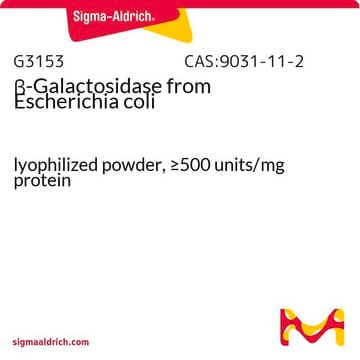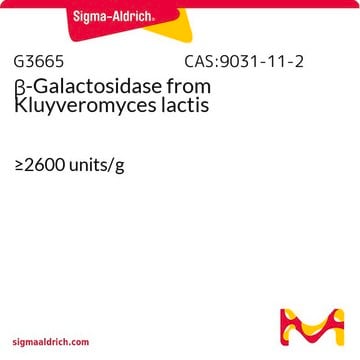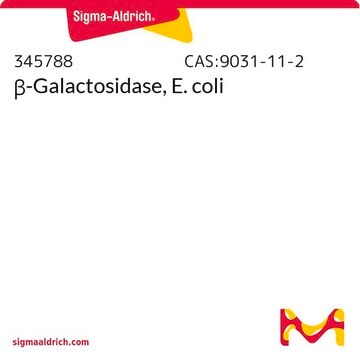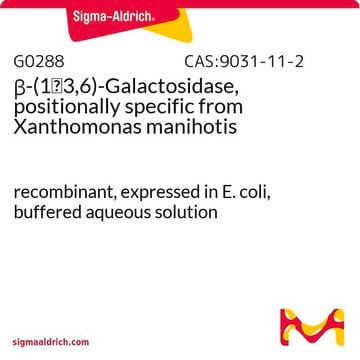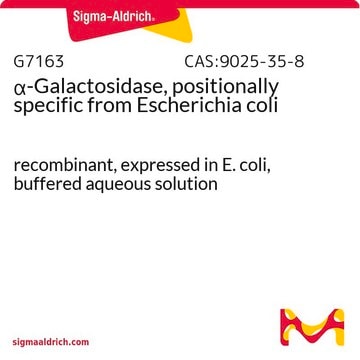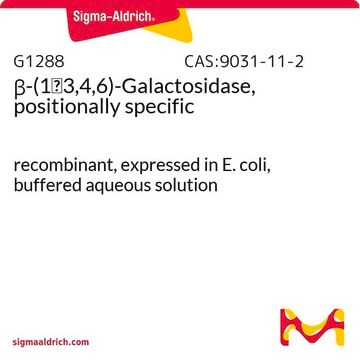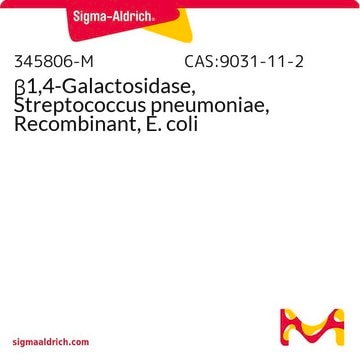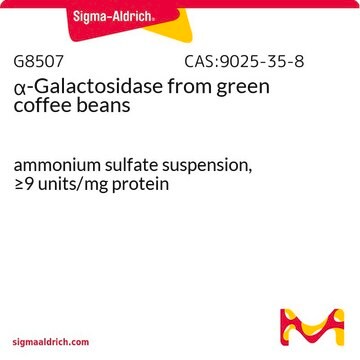A search of the website does not show a density for product G4155. For products supplied in small quantities, it is not common for the density to be measured. However, for solutions available in larger quantities, density information is often provided. Although the density for G4155 is not stated, there is some useful information available from the website. The physical form of the product is a suspension in 50% glycerol, 5 mM Tris buffer salts, 5 mM magnesium chloride, 0.5 mM DTT, and 0.5 mM mercaptoethanol at pH 7.4.
G4155
β-Galactosidase from Escherichia coli
aqueous glycerol suspension, ≥500 units/mg protein (biuret)
Synonym(s):
β-D-Galactoside galactohydrolase, Lactase
Select a Size
€108.00
Select a Size
About This Item
€108.00
Recommended Products
form
aqueous glycerol suspension
Quality Level
specific activity
≥500 units/mg protein (biuret)
mol wt
465 kDa
storage temp.
−20°C
Looking for similar products? Visit Product Comparison Guide
Related Categories
Application
Biochem/physiol Actions
Physical properties
Unit Definition
Physical form
Other Notes
inhibitor
substrate
Storage Class Code
10 - Combustible liquids
WGK
WGK 2
Flash Point(F)
Not applicable
Flash Point(C)
Not applicable
Choose from one of the most recent versions:
Certificates of Analysis (COA)
Don't see the Right Version?
If you require a particular version, you can look up a specific certificate by the Lot or Batch number.
Already Own This Product?
Find documentation for the products that you have recently purchased in the Document Library.
Customers Also Viewed
-
Could you please advise if the density of the aqueous suspension of beta galactosidase from Escherichia coli (G4155) can be assumed as 1 uL of solution is equal to 1 mg, given that the SDS and provided enzyme assay do not contain this information?
1 answer-
Helpful?
-
-
We recently purchased this enzyme. Information given regarding enzyme volume is only 1000 units. I want to know what would be units per uL. How much is the liquid volume in the given product to calculate the enzyme concentration? Provide proper informatio
1 answer-
Units/ml can be calculated using the numbers reported in batch specific CofA. Below is an example.
CofA of G4155, lot 0000303635
https://www.sigmaaldrich.com/certificates/sapfs/PROD/sap/certificate_pdfs/COFA/Q14/G4155-3KU0000303635.pdf
1.5 mgP/ml X 766 units/mg Protein = 1149 units/mlHelpful?
-
Active Filters
Our team of scientists has experience in all areas of research including Life Science, Material Science, Chemical Synthesis, Chromatography, Analytical and many others.
Contact Technical Service

